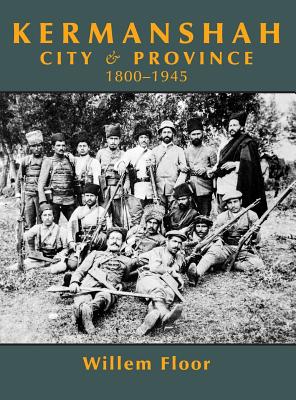

 Mage Publishers
Mage Publishers
Kermanshah: City and Province, 1800-1945


Key Metrics
- Willem M Floor
- Mage Publishers
- Hardcover
- 9781949445008
- 11 X 8.5 X 1.31 inches
- 3.73 pounds
- History > Middle East - Iran
- English
 Secure Transaction
Secure TransactionBook Description
Kermanshah was one of the most important commercial gateways to Iran and an important transit station on the trade route between Iraq and Iran. It was also a gathering point for pilgrims going to and coming back from the holy shrines of Kerbela and Najaf. What's more, from 1920 to 1925, it was the government's most important non-oil revenue earner. Despite all this, Kermanshah has been mostly ignored by historians.
In Kermanshah: City and Province, 1800 to 1945, Willem Floor discusses, in detail, the rise of the city as an important bandar, or entrep�t; as well as how tribal politics dominated the city. As a result of which, Kermanshah remained a very conservative city that elected reactionary tribal chiefs and landowners to parliament. Because of its strategic position on the border with Iraq, the province became consequential whenever war broke out with the Ottomans. During World War I, from 1916 to 1917, it became the capital of the short-lived Mohajerin movement (migration of Majles deputies from Tehran) and a battlefield for the combined Ottoman and German forces against the Russians. Although this last event has been studied to a certain extent, this book provides copious new and nuanced information about the period. Finally, the book provides detailed new information about political events from 1906 to 1945 that show how provincial politics had a life of its own. So-called political differences may have been clad in a national and/or constitutionalist guise, but these differences were determined more by local cleavages than national ones. The history of Kermanshah demonstrates that, in the end, all politics is local.
Author Bio
Dexter Filkins joined The New Yorker as a staff writer in 2011. He has written about Crown Prince Mohammed bin Salman of Saudi Arabia, the uprisings in Yemen, the crises in Syria and Lebanon, the Prime Minister of Turkey, and a troubled Iraq War veteran who tracked down the surviving members of a family that his unit had opened fire on.
Filkins worked at the Miami Herald and the Los Angeles Times, where he was the paper’s New Delhi bureau chief, before joining the New York Times, in 2000, reporting from New York, South Asia, and Iraq, where he was based from 2003 to 2006.
In 2009, he won a Pulitzer Prize as part of a team of Times journalists covering Pakistan and Afghanistan. In 2006, he was a Nieman Fellow at Harvard University, and, from 2007 to 2008, he was a fellow at the Carr Center for Human Rights Policy, at Harvard’s Kennedy School of Government.
He has received numerous prizes, including two George Polk Awards and three Overseas Press Club Awards. His book, “The Forever War,” won the 2008 National Book Critics Circle Award for nonfiction and was named a best book of the year by the Times, the Washington Post, Time, and the Boston Globe.
Source: The New Yorker
Videos
No Videos
Community reviews
Write a ReviewNo Community reviews